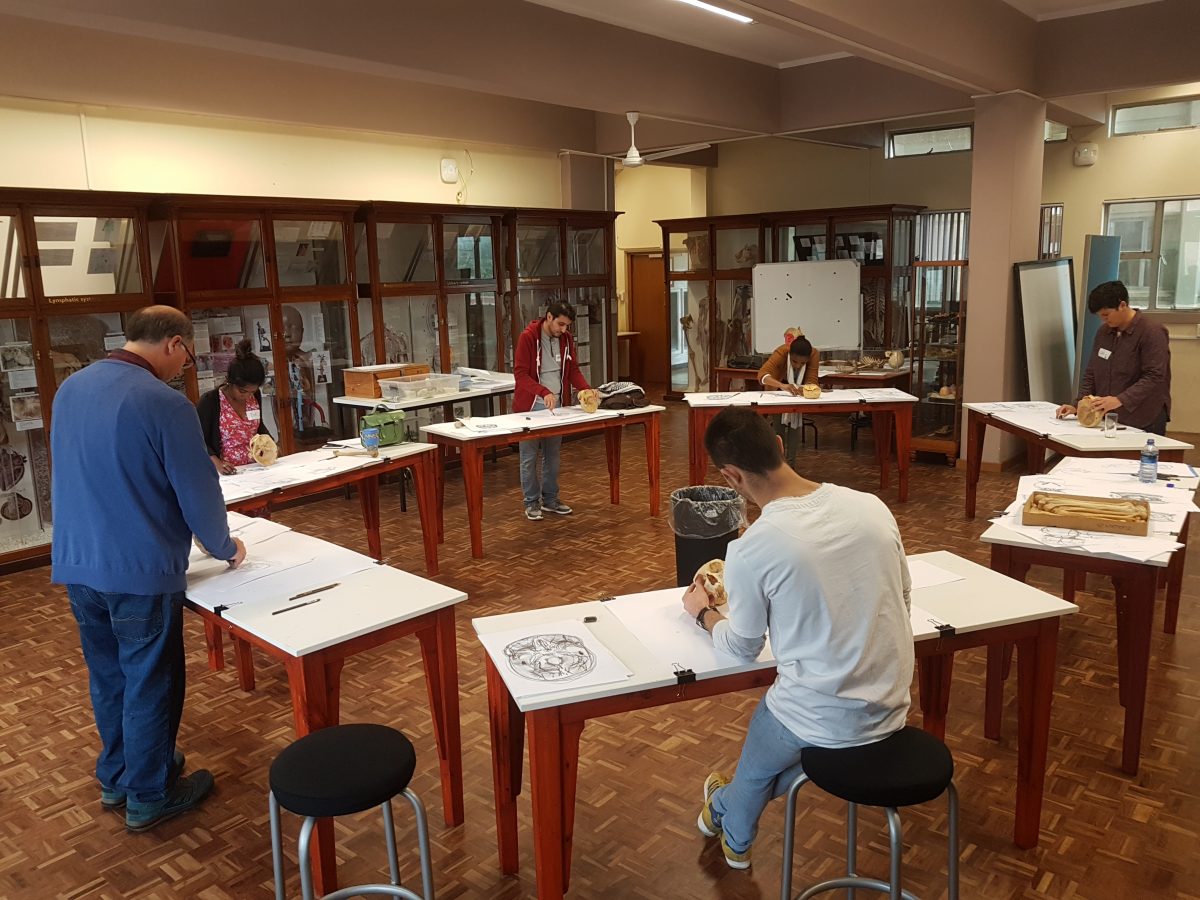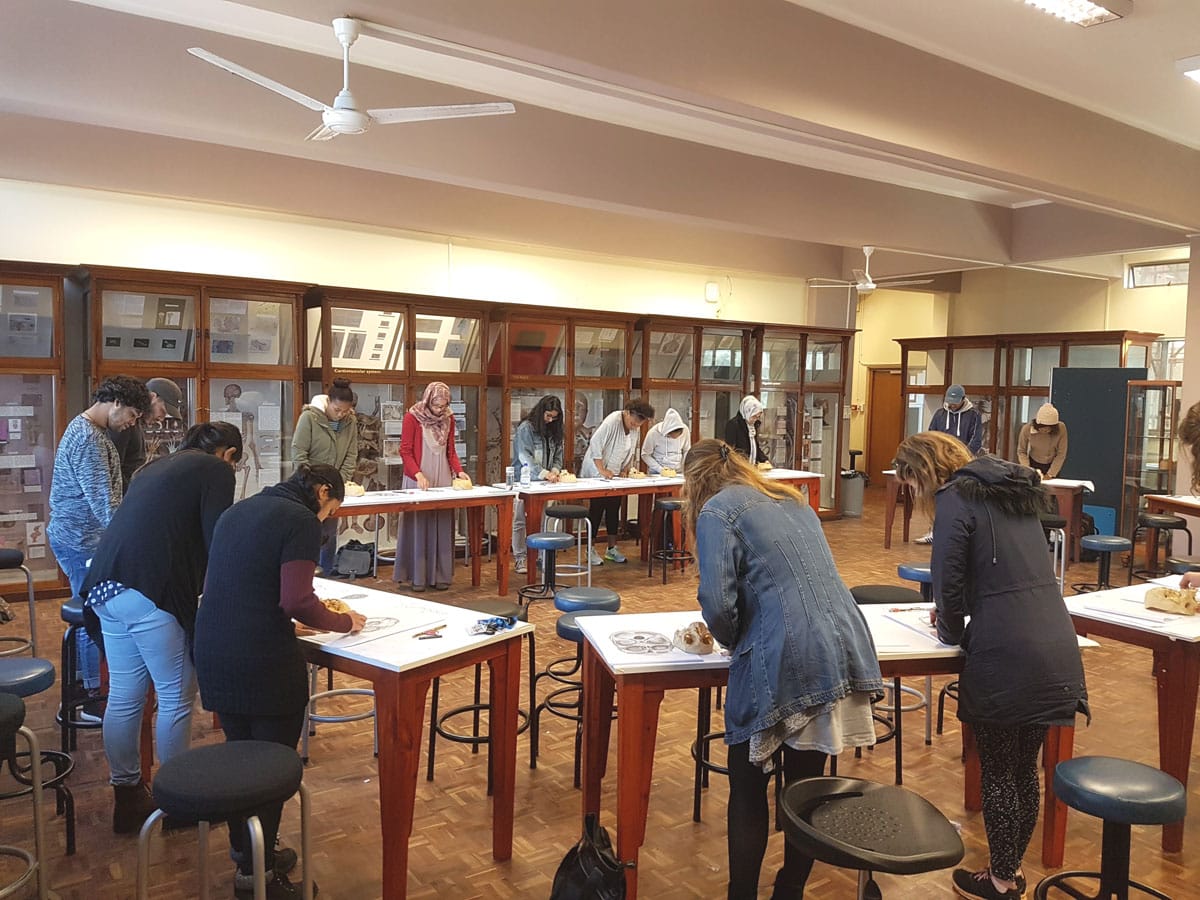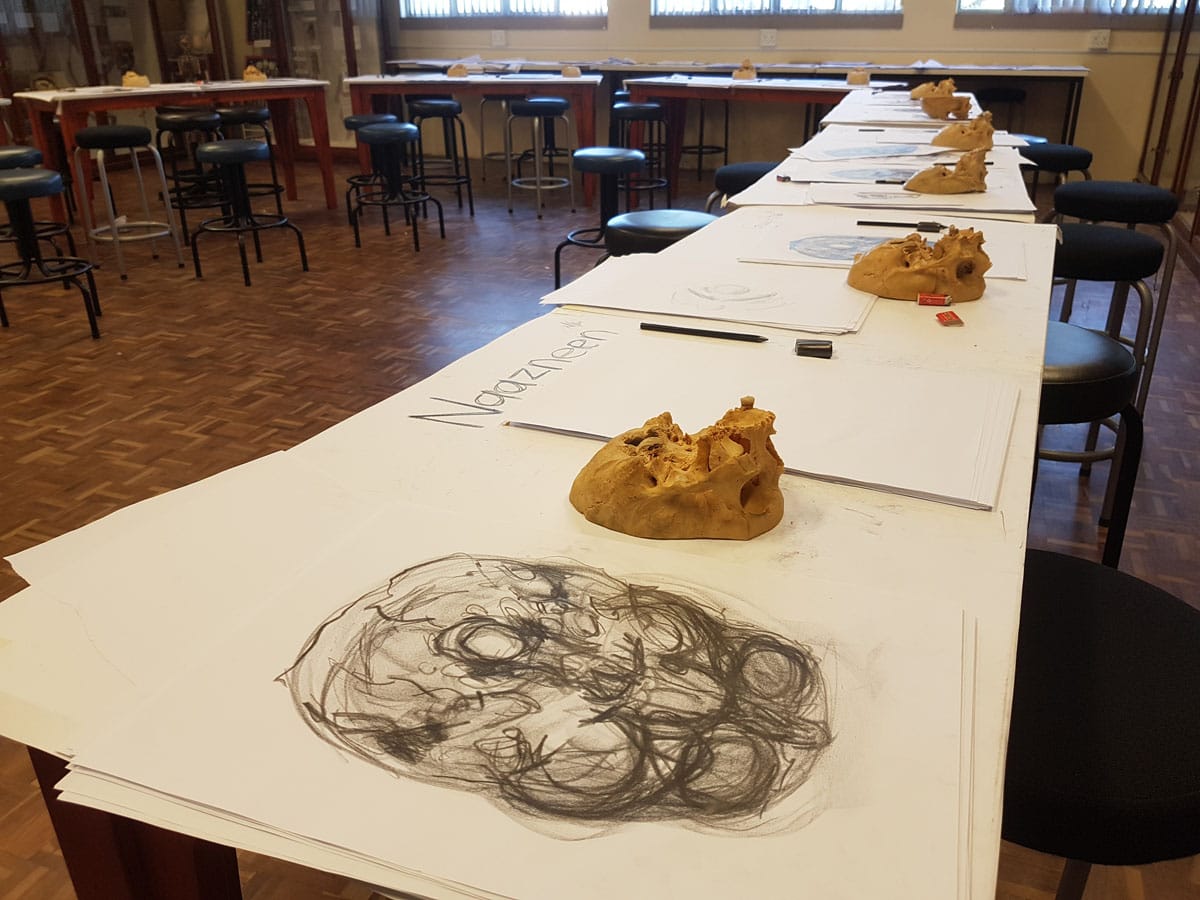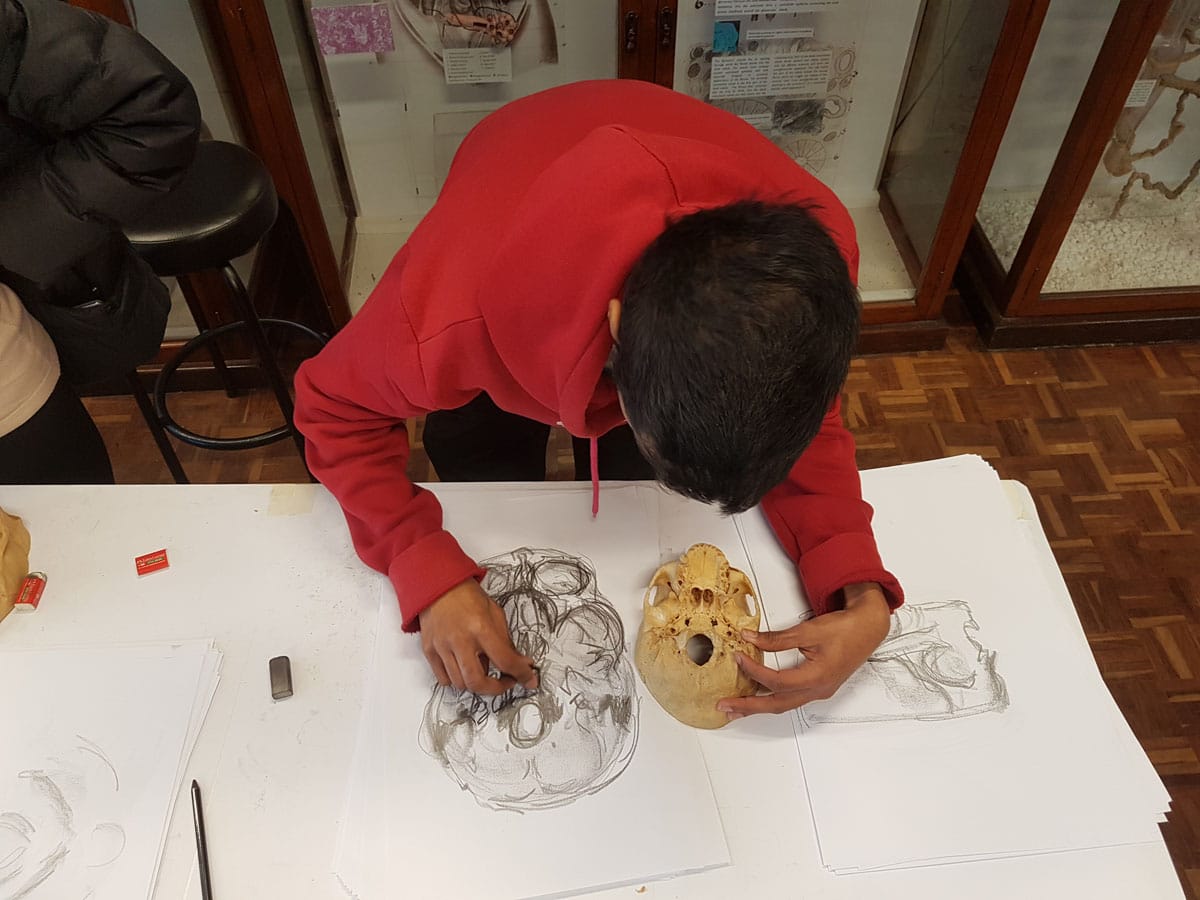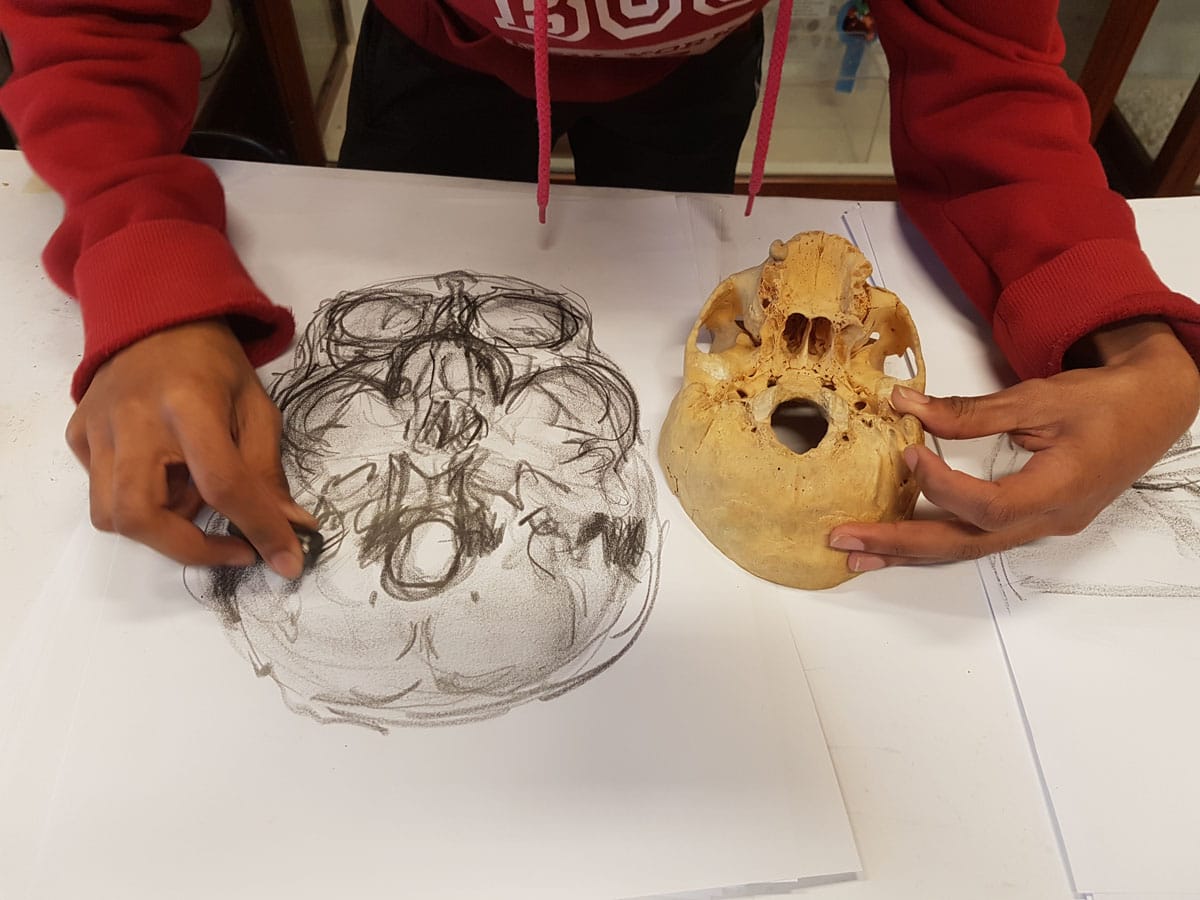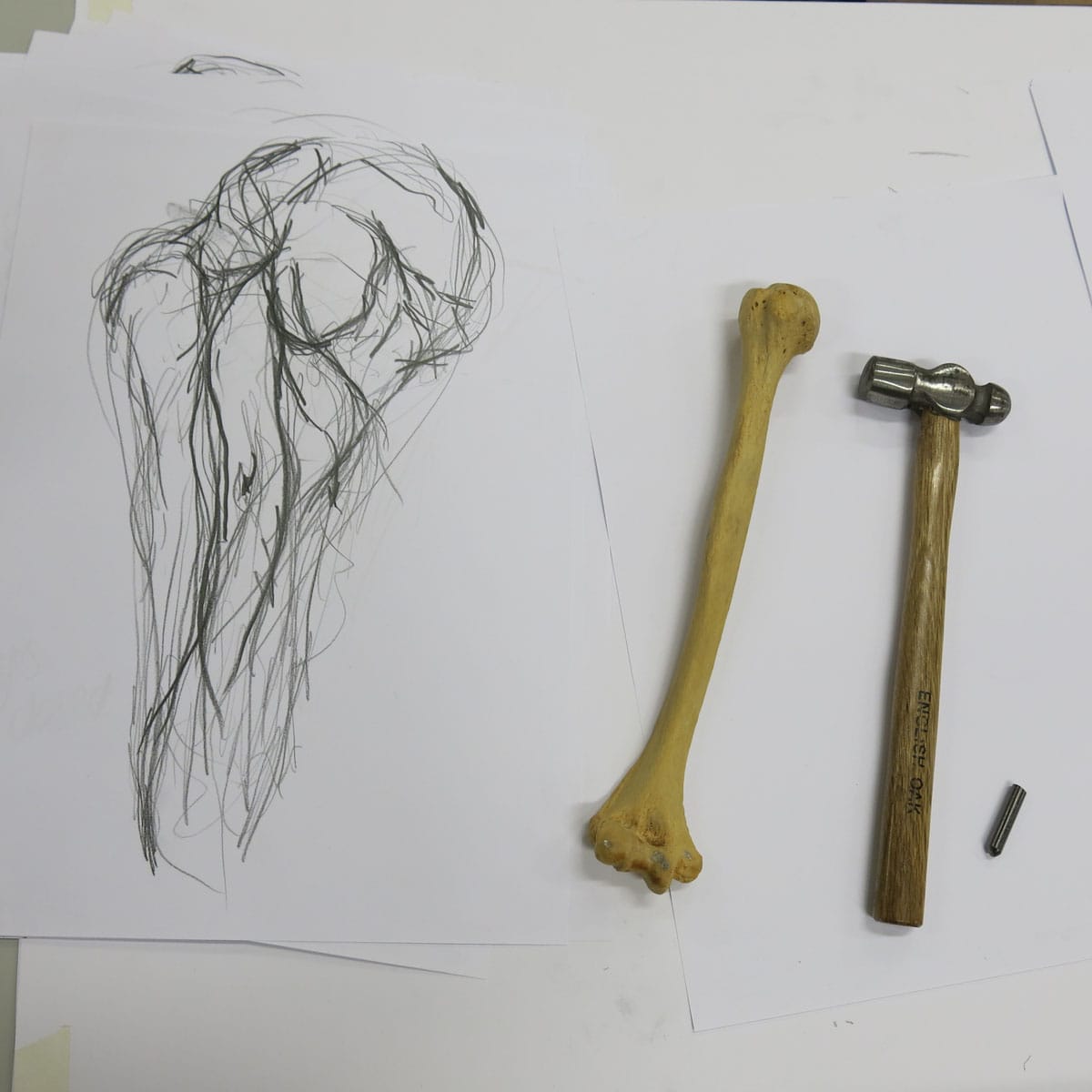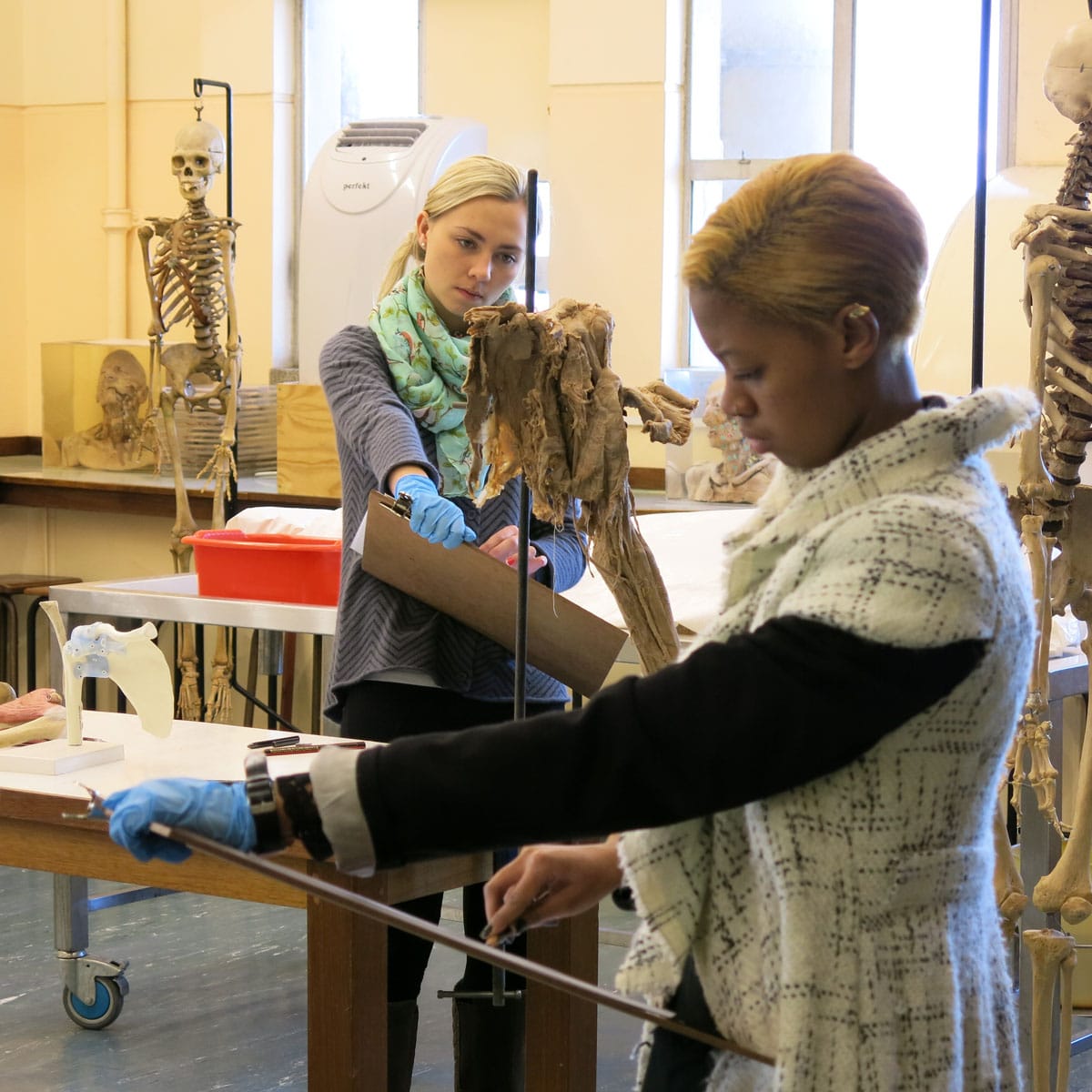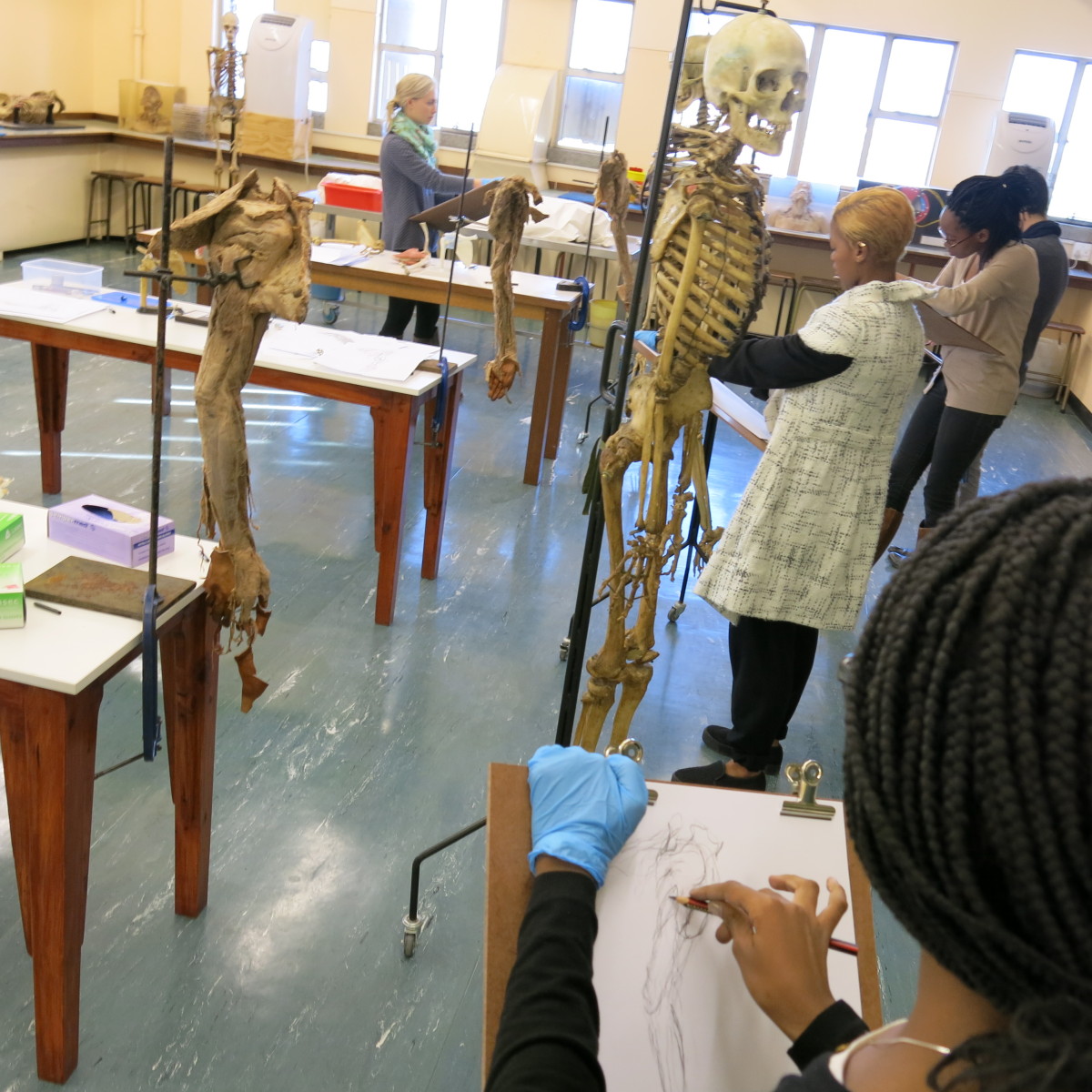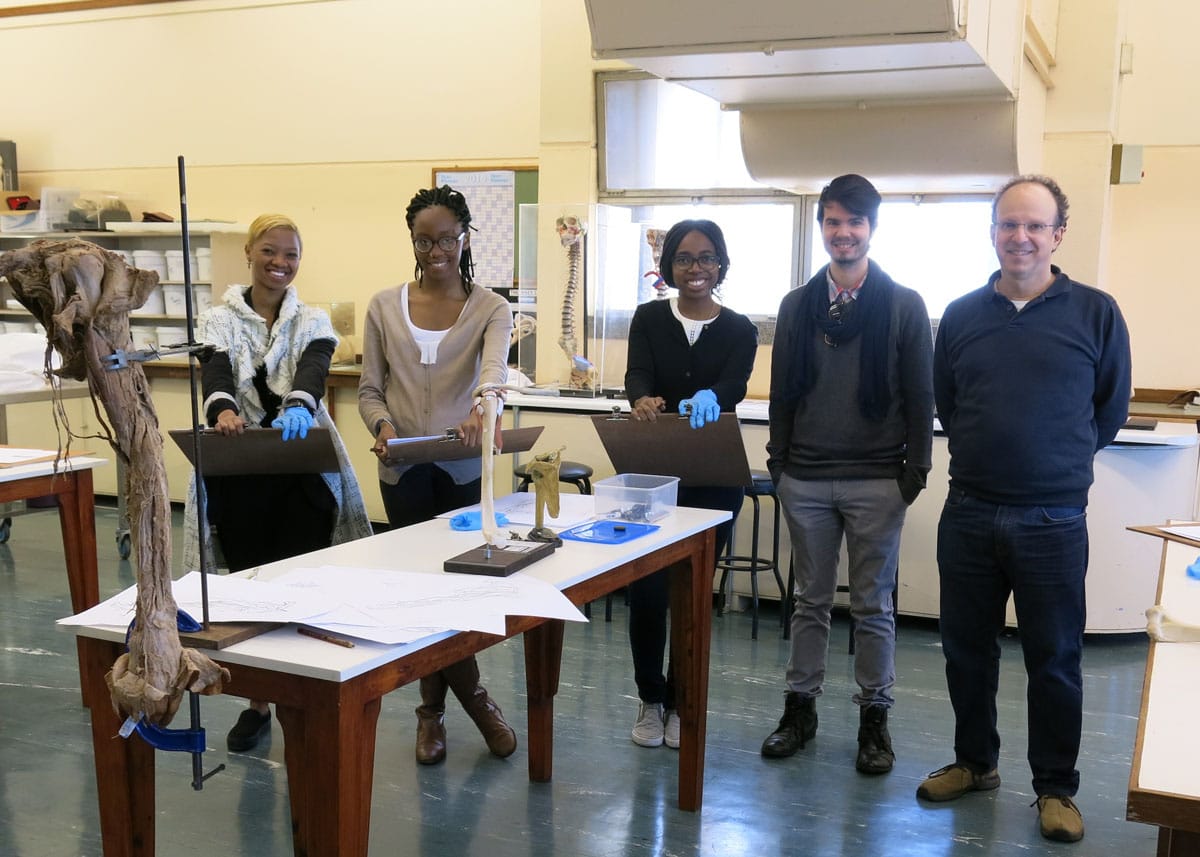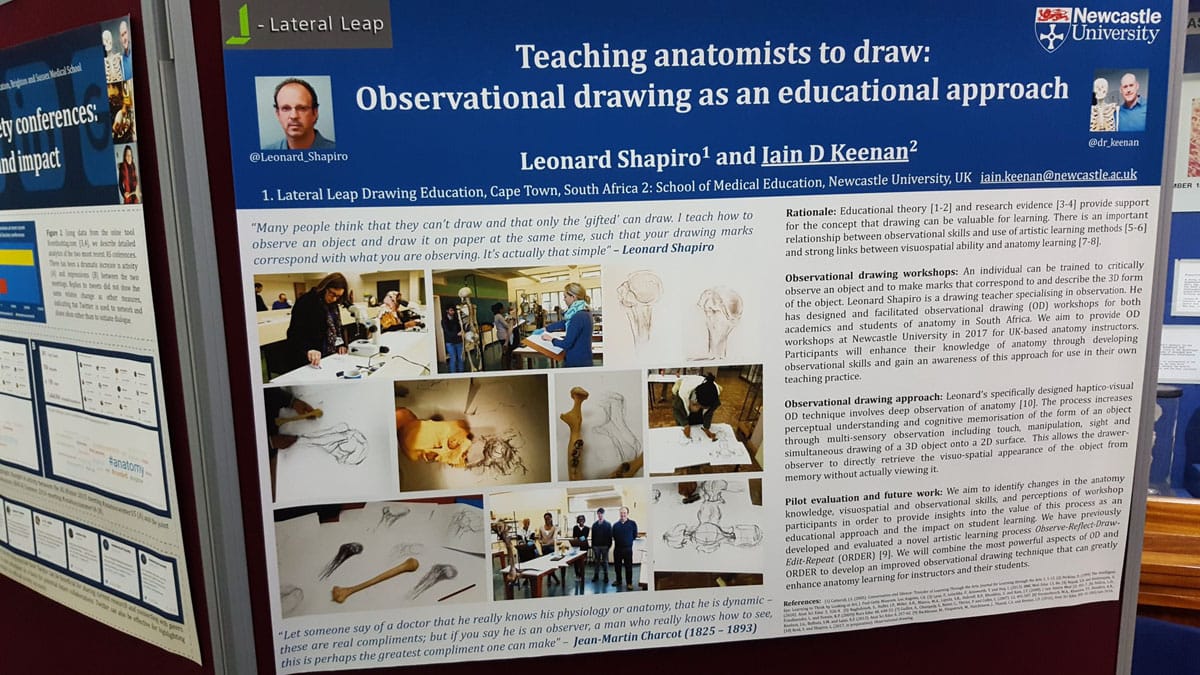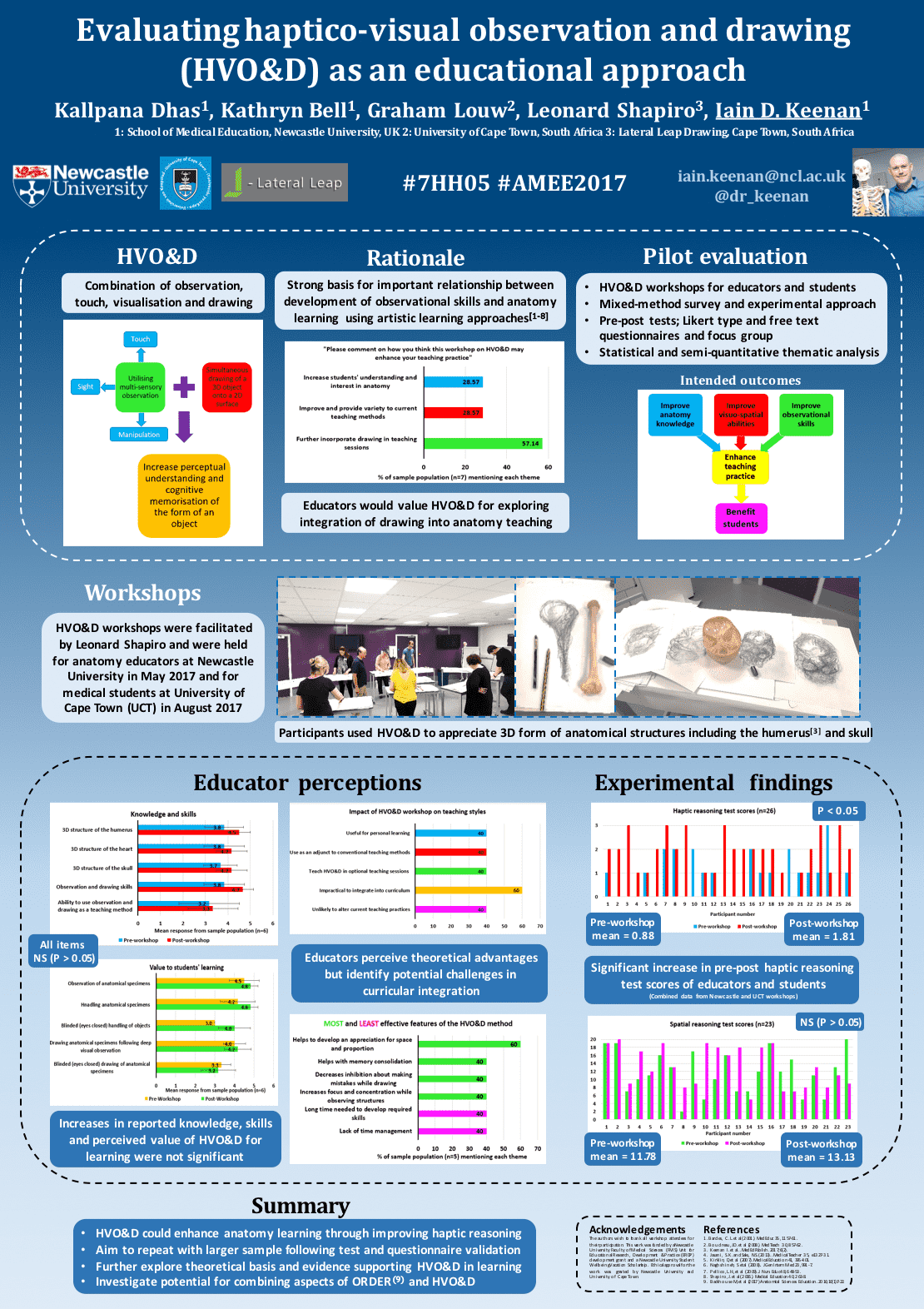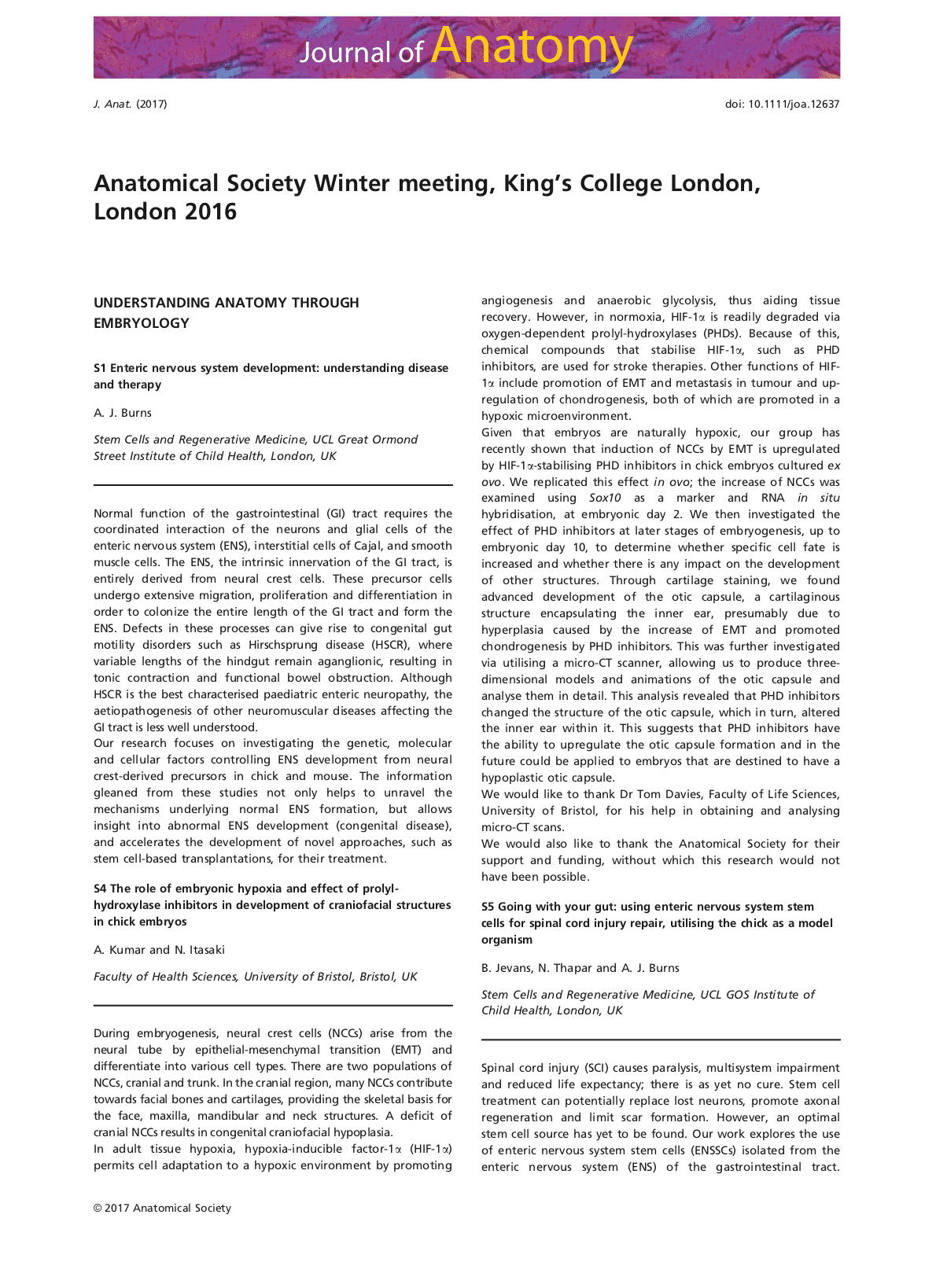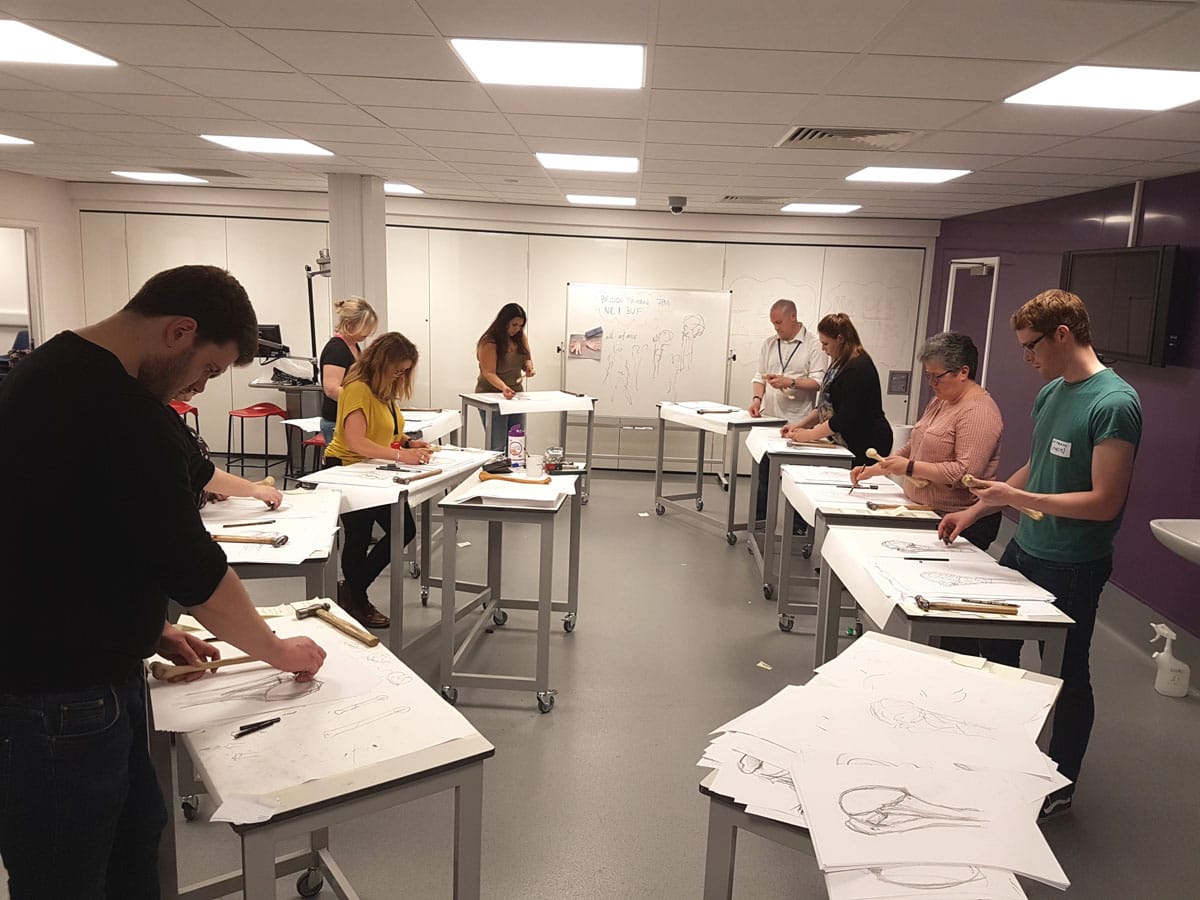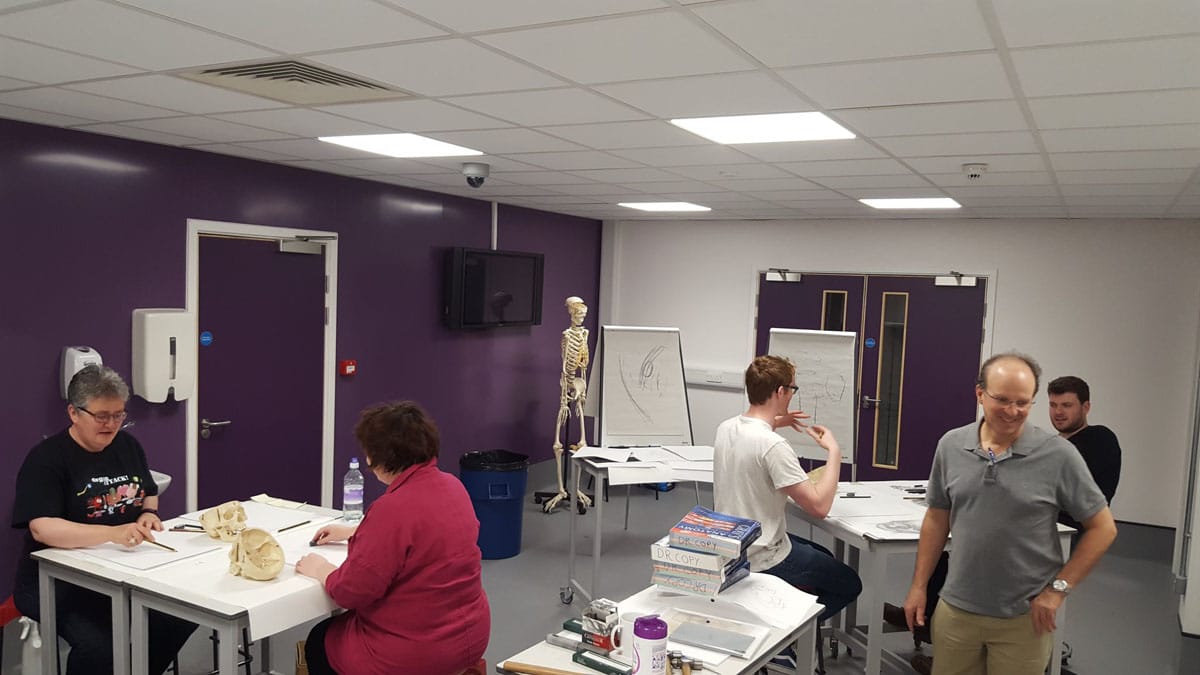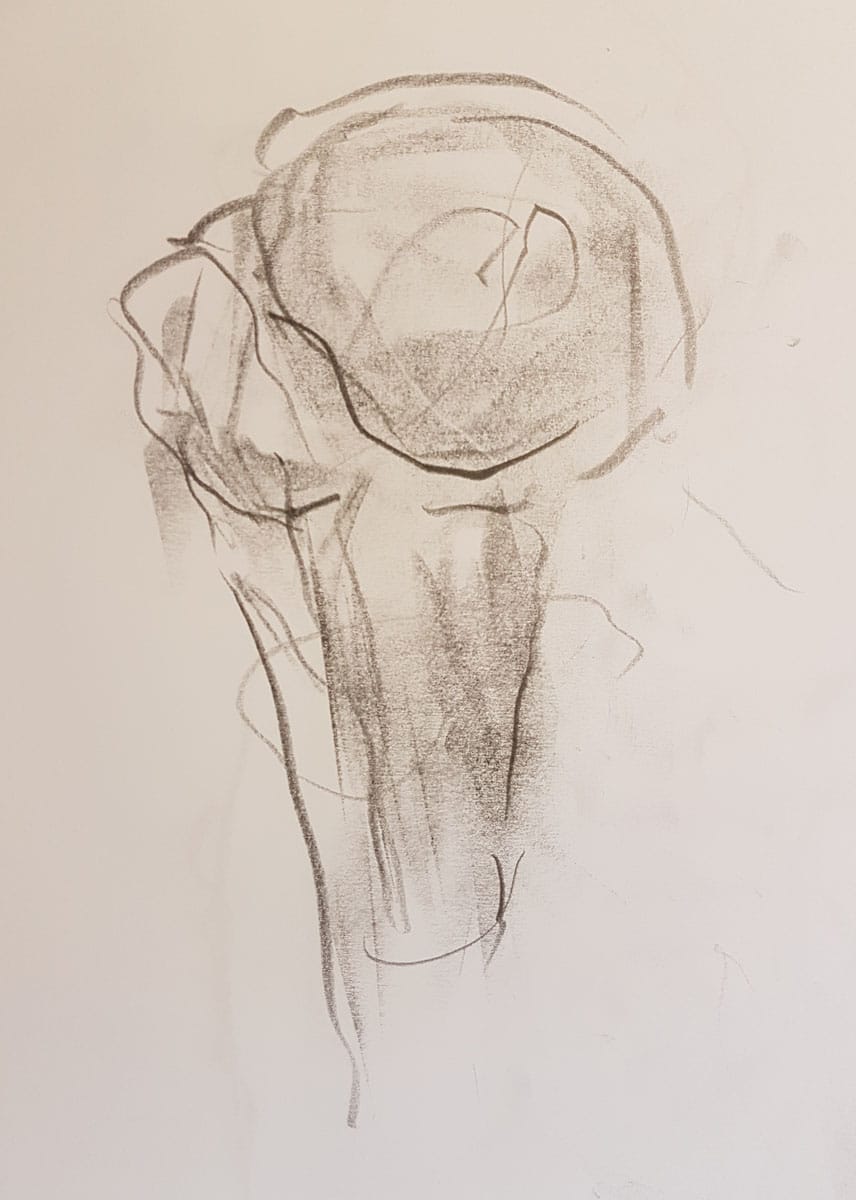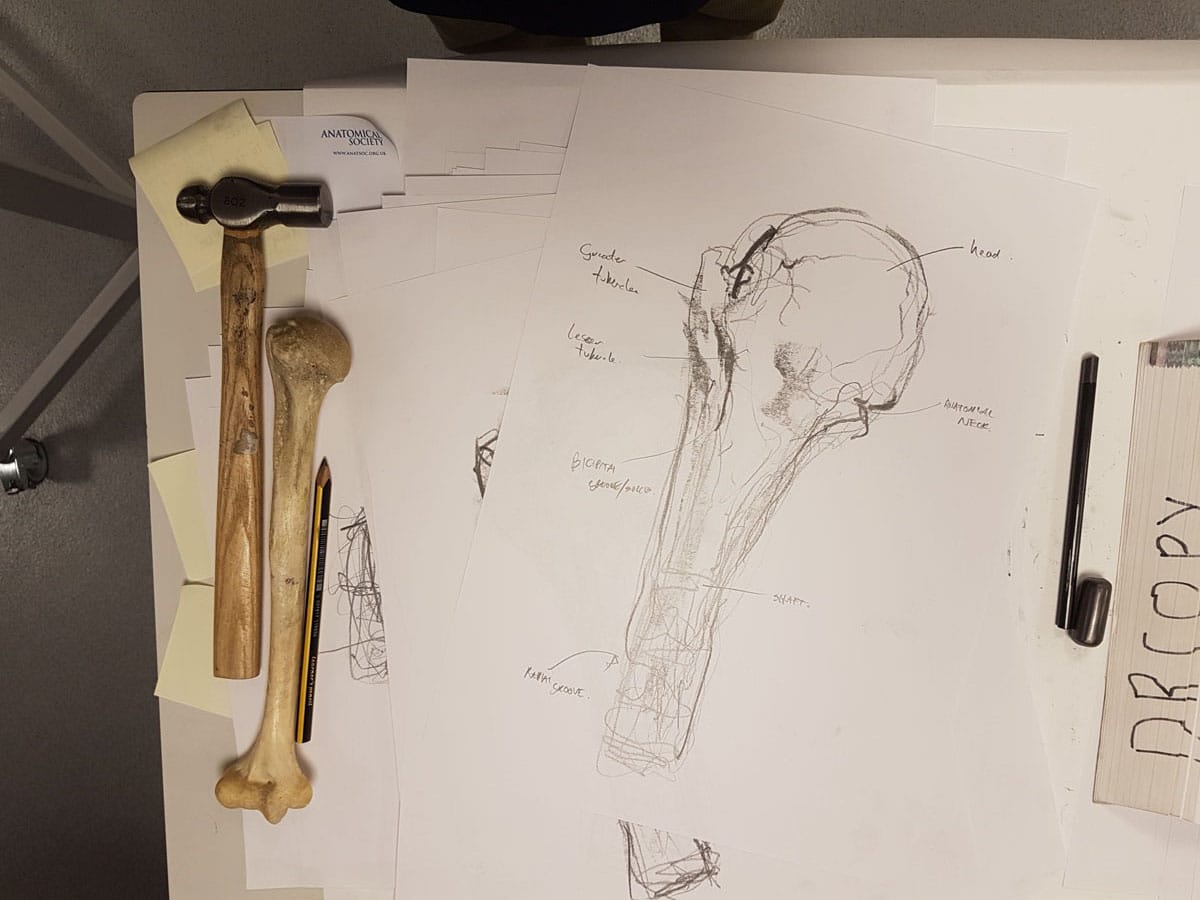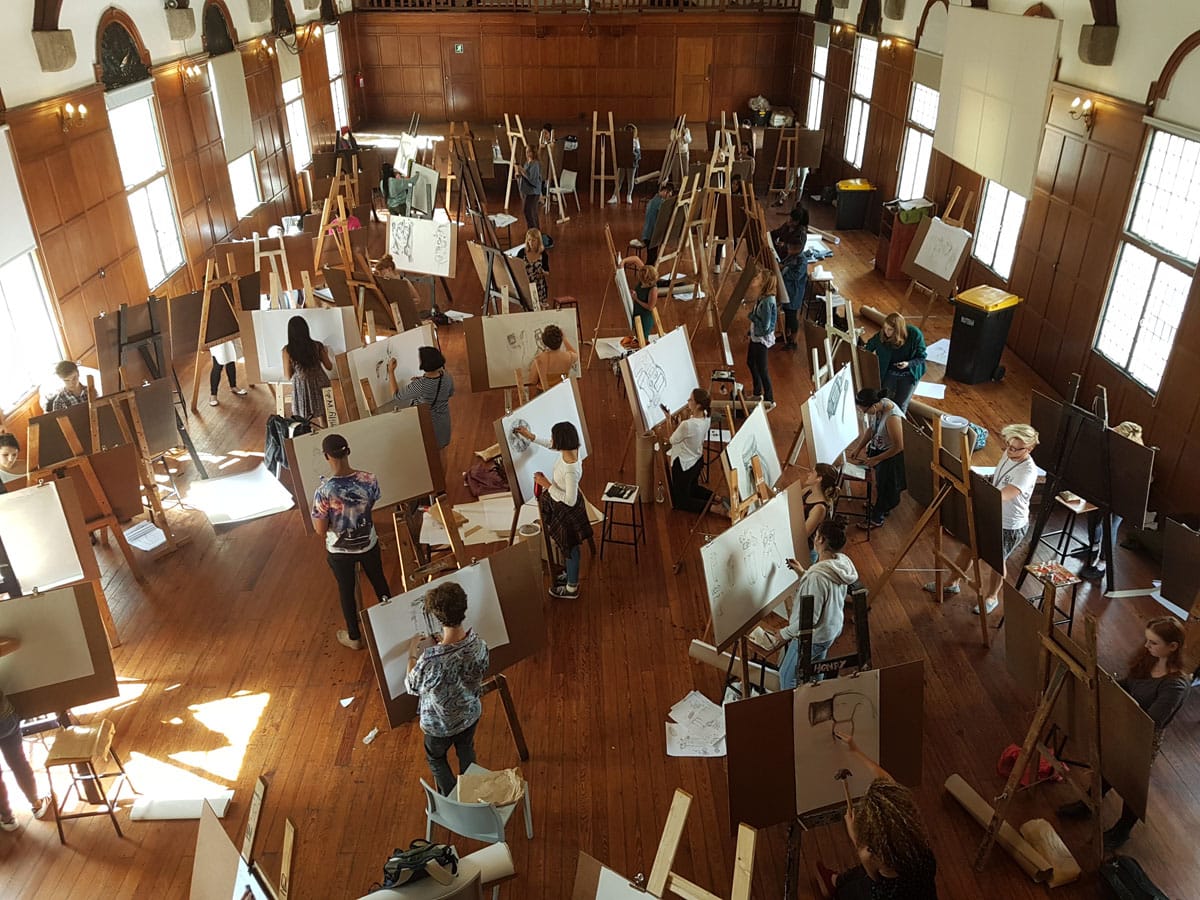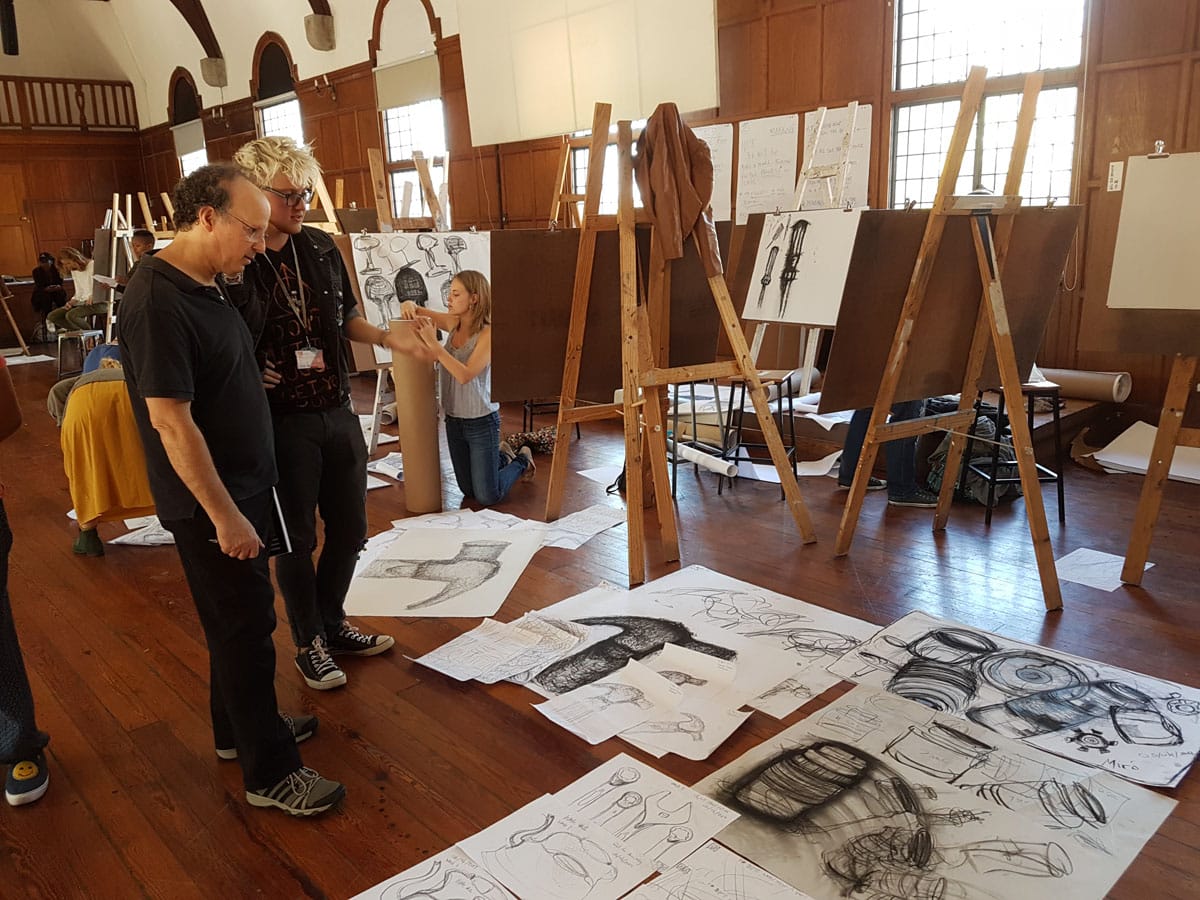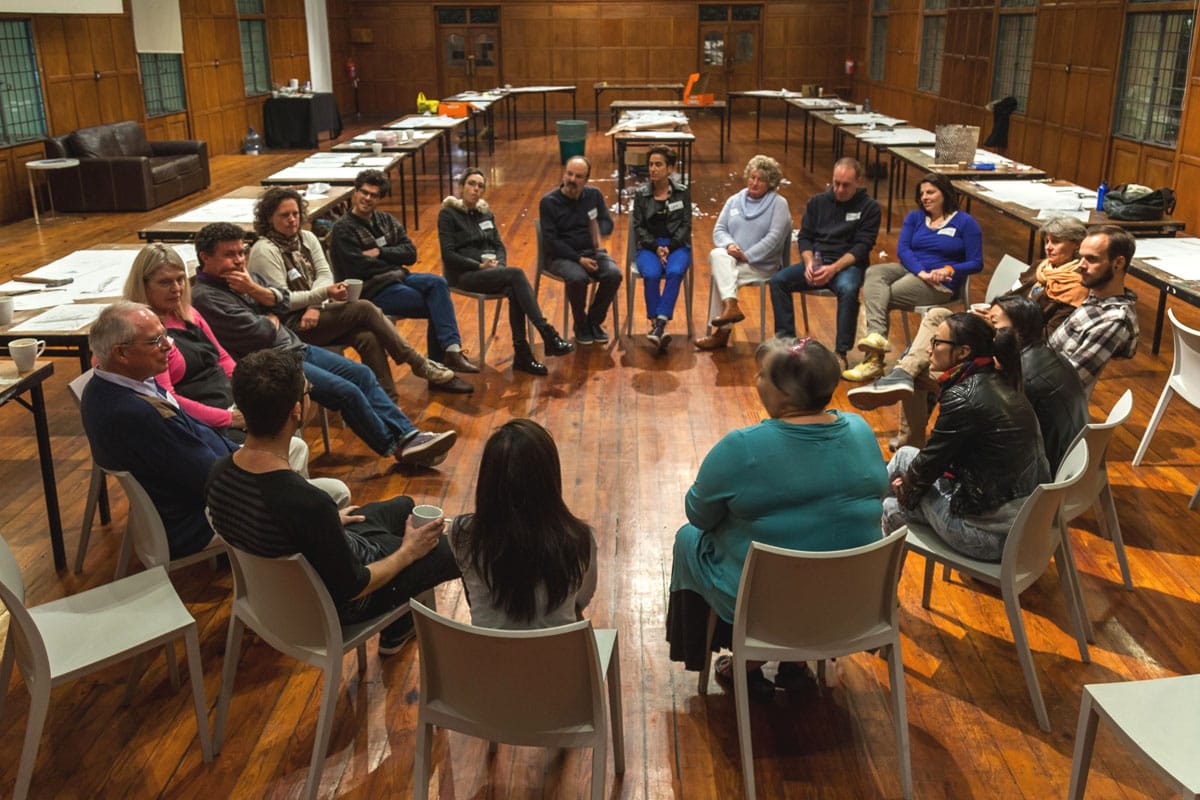A deeper observation method, using the sense of touch coupled with drawing.
We predominately observe an object with our sense of sight. As such, we do not detect many aspects of the object that can only be observed via our sense of touch. If we observe an object using more than just our sense of sight, and include the sense of touch (haptics), we begin to gather a lot more data about the three-dimensional form and volume of the object, and as a consequence begin to observe and understand it more completely.
I have developed a novel method of observation (which includes the act of drawing or 'mark-making') that I teach to people who have never drawn before, including medical students, clinicians and anatomy educators.
I teach this method in a workshop environment online as well as in class. The workshop is focused, dynamic and fun. The outcome is real learning and growth and a sense of accomplishment.
Course participants will be introduced to the value of observation using this multi-sensory method which crucially involves the sense of touch in addition to sight, coupled with the simultaneous act of drawing. The haptic information that we gather about the form and volume of an object is re-presented in marks on paper.
By observing in this way one literally begins to notice more of the object.
In this course, each participant will be guided through a series of exercises that will enable them to practice this method. The result is that each participant will be able to observe and draw capably using this approach.
Many people think that they can’t draw and that only the ‘gifted’ or talented can draw. This is a fallacy. In this workshop this belief is entirely upended and every individual’s potential and ability to draw is realized. Anyone can be guided towards their ability to observe and draw, and it continues to be my experience that every person that I have taught can draw, and draw well. Drawing is fundamentally the making of marks on paper through upper-limb and hand gestures i.e. the moving of your arm and hand with a pencil (a drawing instrument) in it.
NOTE: You need absolutely NO drawing experience to participate in this workshop.
The Haptico-visual observation and drawing (HVOD) method.

Leonard Shapiro ORCiD
Leonard Shapiro, B.Soc.Sc., B.A. Fine Art (Hons), University of Cape Town.
ORCID https://orcid.org/0000-0003-1362-8254
Leonard Shapiro is affiliated with the Department of Human Biology, University of Cape Town, South Africa. He has developed a novel, multi-sensory observation method that crucially employs the sense of touch (haptics) coupled with the simultaneous act of drawing. It is called the Haptico-visual observation and drawing (HVOD) method. In anatomy education, the benefits of using the HVOD method include the enhanced observation of the 3D form of anatomical parts, the cognitive memorisation of anatomical parts as a 3D 'mental picture', improved spatial orientation within the volume of anatomical parts, and an ability to draw. The HVOD method is taught in a group workshop online or face-to-face. These are offered to medical students, clinicians and anatomy lecturers in South Africa and abroad.
Leonard has taught the HVOD method at the University of Cape Town (South Africa), Newcastle University (England), The University of British Columbia (Canada), King's College London - The Gordon Museum of Pathology (England), University College Cork (Ireland), Weill Cornell Medical College (USA).
Leonard has also developed a number of art-based exercises, specifically designed to improve three-dimensional (3D) spatial awareness. These online courses are in collaboration with lecturers who are actively engaged in improving education methodology in anatomy. Leonard contributes to the anatomy education discourse via publications and articles and by presenting at anatomy conferences.
For more information please email: [email protected]
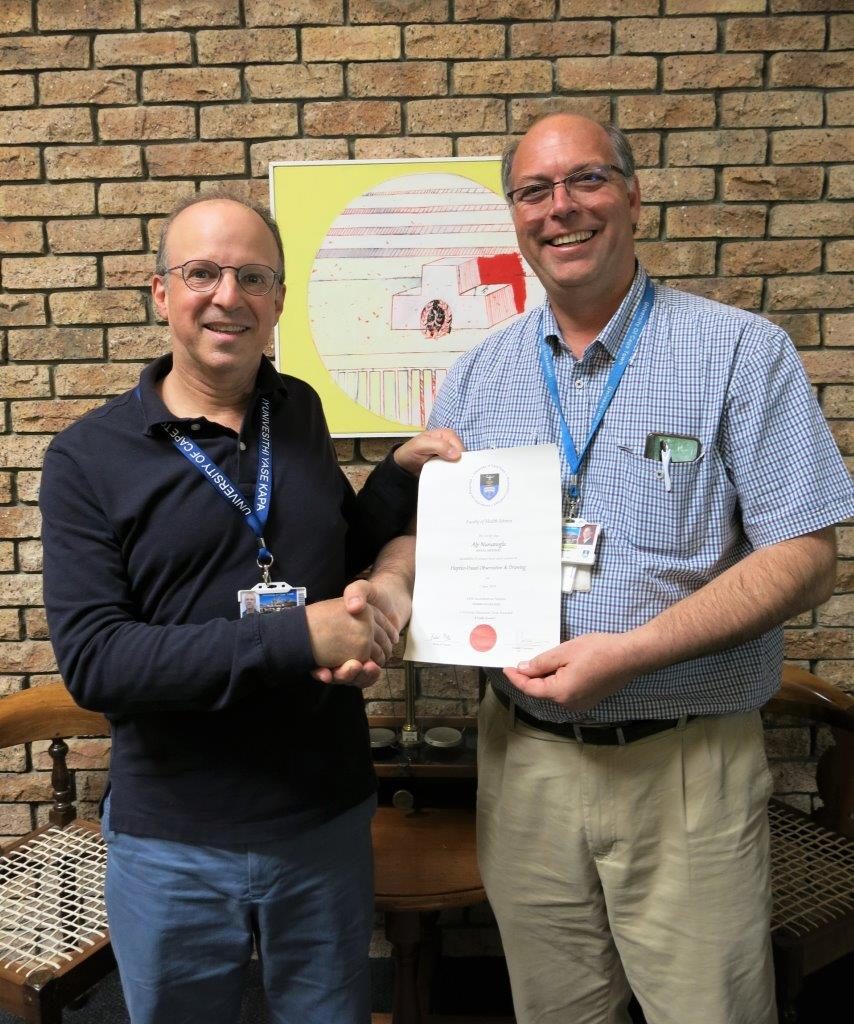
Presenting Professor Alp Numanoglu, Head of Paediatric Surgery at Red Cross War Memorial Children's Hospital, with his UCT, HVOD Certificate
Observation workshops for medical students and clinicians, in class or via Zoom.
Observation studies of the base of the skull by UCT MBChB students during a HVOD workshop.
UCT MBChB students observing the 3D form of a hammer and humerus using the HVOD method.
Following on from hammer and humerus studies, UCT MBChB students using the HVOD method to study upper limb prosections, during a HVOD workshop.
Collaborative Academic Research
Poster on observational drawing as an educational approach and combining the best of the ORDER (Observe, Reflect, Draw, Edit, Repeat) and HVOD observation methods. Anatomy Society Winter Meeting 2016, King's College, London.
Poster presentation on evaluation of data generated by HVOD workshops at the School of Medical Education, Newcastle University and the Division of Clinical Anatomy and Biological Anthropology, University of Cape Town. Association for Medical Education in Europe (AMEE) Conference, 2017, Helsinki. Poster by Kallpana Dhas. (Click on image to open as a pdf).
View the workshop data here
